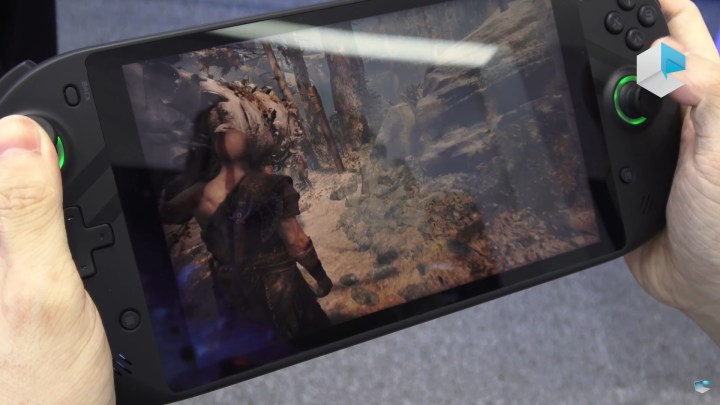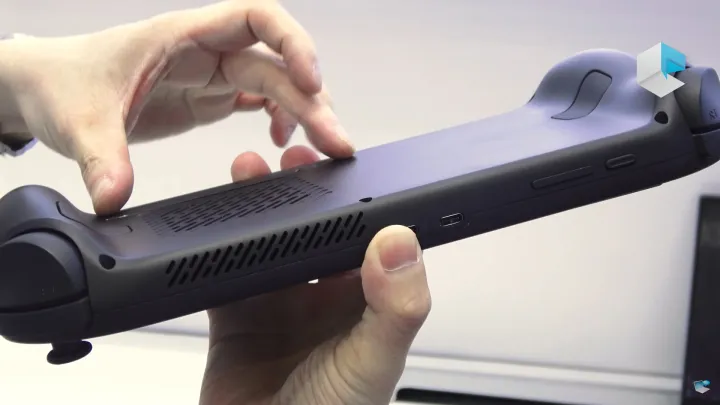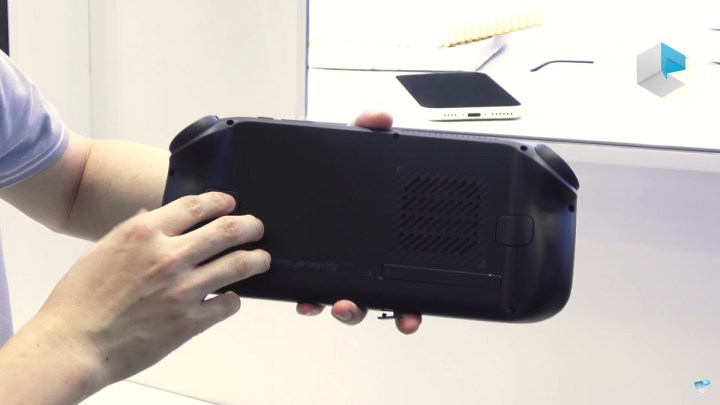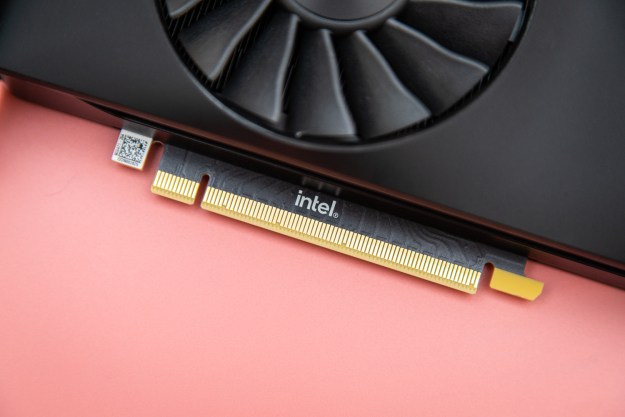
All of the most popular gaming handhelds, such as the Steam Deck or the Asus ROG Ally, are currently powered by AMD APUs. However, Intel Meteor Lake is about to change that narrative. Emdoor has just previewed its upcoming handheld with a Meteor Lake chip and Intel Arc 5 graphics inside, and it looks like AMD might have some serious competition on the horizon.
This is a new venture for both Emdoor, which has previously been known for mini PCs and tablets, and Intel, which hasn’t really participated in the recent boom for portable gaming PCs. The result of this cooperation looks like a handheld along the likes of the Ayaneo console we’ve already seen before. Thanks to a preview shared by Notebook Italia, we know more about its design and specs.
The console runs on Windows 11 and is powered by Intel Meteor Lake-H, also referred to as Core Ultra 100H, with a TDP range of 20W to 35W. This could potentially mean a performance boost over the Steam Deck, which maxes out at a 15W TDP. However, it could just be Intel being Intel with a higher TDP range, and we don’t know the exact power range of the device itself, only the CPU. In an idle state or within the user interface, the CPU is seen operating at around 5 watts, while the GPU actually hits above 3.0GHz.

Emdoor is also serving up integrated Intel Arc 5 graphics. We’re not sure about the exact specification here, but it could have as many as eight Xe cores, which would make it the equivalent of the Intel Arc A380 in mobile form. The handheld is seen running God of War, which is one of the more demanding games of this generation, so that bodes well for the Arc 5.
This gaming device can also feature up to 32GB of LDDR5X memory and up to 2TB PCIe Gen 4 M.2 SSD storage, which, again, gives it an edge over several other popular solutions. The exact screen spec is unknown, but we do know that it has an 8-inch touchscreen with 1920 x 1200 resolution and a 16:10 aspect ratio. In terms of connectivity, there are two USB Type-C ports, one USB Type-A 2.0, and a 3.5mm headphone jack.

Lastly, the device features a stand at the back that lets you use it in tablet mode. The button layout is pretty standard, although the stand kind of calls for a similar solution to Lenovo Legion Go’s detachable controllers, but that’s not included here.
It’s hard to speculate about the exact performance of Emdoor’s new device, but it’s going to be interesting to see how it compares to some of AMD’s solutions. The Z1 and Z1 Extreme chips have been a popular option for recent gaming handhelds. The vastly increased TDP could give Intel an edge here, but it might also be detrimental to battery life.
Editors' Recommendations
- Is this Razer’s Steam Deck killer?
- Intel just boosted gaming performance by up to 155%
- Intel claims up to 268% gaming boost with latest Arc graphics drivers
- Intel’s CPUs just got way more confusing
- Why MSI’s leaked gaming handheld might crush its competitors




